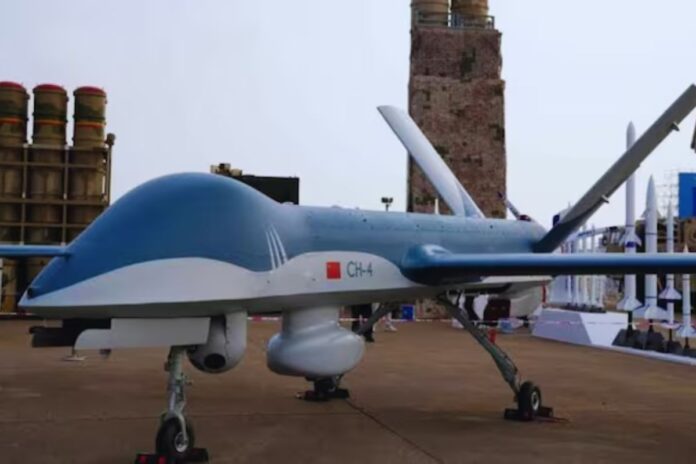China’s AI-enabled drones are emerging as a formidable threat to India’s border security. The People’s Liberation Army (PLA) is set to receive nearly one million AI-powered drones by 2026, a move that highlights China’s strategic push toward advanced warfare capabilities. These drones, equipped with anti-tank munitions and designed for swarm attacks, present a significant challenge to India’s air defence systems and critical military installations.
China’s AI-Enabled Drones: The Game Changer
The deployment of these lightweight kamikaze drones by the PLA along the Line of Actual Control (LAC) poses a direct threat to India’s eastern and northern borders. Defence experts suggest that Beijing’s close military ties with Islamabad could potentially enable the transfer of these advanced technologies to Pakistan, further complicating India’s security landscape.
These drones are capable of operating for up to eight hours and are precision-guided to strike vital assets such as command centres and missile silos. Designed to evade counter-Unmanned Aircraft Systems (UAS) and existing air defence systems, they amplify the challenges faced by Indian forces.
The Economics of Modern Warfare
AI-powered drones offer a cost-effective solution compared to traditional weaponry. While GPS-guided artillery shells cost approximately $100,000 per round, kamikaze drones are priced as low as $1,500. This affordability enables the PLA to deploy large swarms—ranging from 500 to 1,000 drones—capable of overwhelming even the most sophisticated air defence mechanisms.
Technological Advancements and Strategic Implications
The PLA has been rigorously training its troops with simulated drone swarm combat scenarios. This indicates a strategic focus on integrating AI and drone technology into battlefield tactics. New developments in fibre-optic drones and AI-guided systems make these weapons impervious to traditional countermeasures like electronic warfare.
In addition to swarm attacks, these drones function as anti-tank guided missiles (ATGMs), targeting high-value military assets such as armoured vehicles and troop transport units. Their ability to strike moving and stationary targets with precision enhances their effectiveness in modern warfare.
India’s Countermeasures and Preparedness
Recognizing the imminent threat, the Indian Defence Ministry has been actively exploring advanced technologies to counter China’s AI-enabled drones. Laser-based Integrated Drone Detection and Interdiction Systems (IDD&IS) have been deployed along the LAC, alongside modern drones for surveillance and strategic defence.
Moreover, investments in electronic warfare systems are critical for protecting troop movements and military installations. The Defence Ministry is also emphasizing indigenous solutions to strengthen India’s air defence capabilities.
Why Countering Drone Threats Is Crucial?
The evolving nature of warfare demands a proactive approach to addressing drone threats. FPV (First-Person View) drones have already proven their efficiency in conflicts like the Russia-Ukraine war and the Middle East. Their versatility and cost-effectiveness make them an attractive option for adversaries, further underlining the importance of robust defence mechanisms.
India’s focus on developing AI-driven countermeasures, enhancing surveillance systems, and leveraging real-time data will be pivotal in mitigating the risks posed by these drones. The use of AI and real-time imagery in defence technologies offers a competitive edge, but sustained efforts are necessary to stay ahead in this rapidly changing domain.
As China accelerates its adoption of AI-enabled drones, India must respond with innovation and vigilance. The race for technological dominance in modern warfare has begun, and securing India’s borders demands a strategic blend of advanced defence systems, policy reforms, and global collaborations.
A Call for Strategic Innovation
Strengthening defence capabilities against AI-driven threats is no longer optional but a necessity. With China’s advancements in drone technology, India must prioritize investments in research and development to secure its borders effectively. The future of warfare hinges on technological superiority, and India must rise to the challenge.

